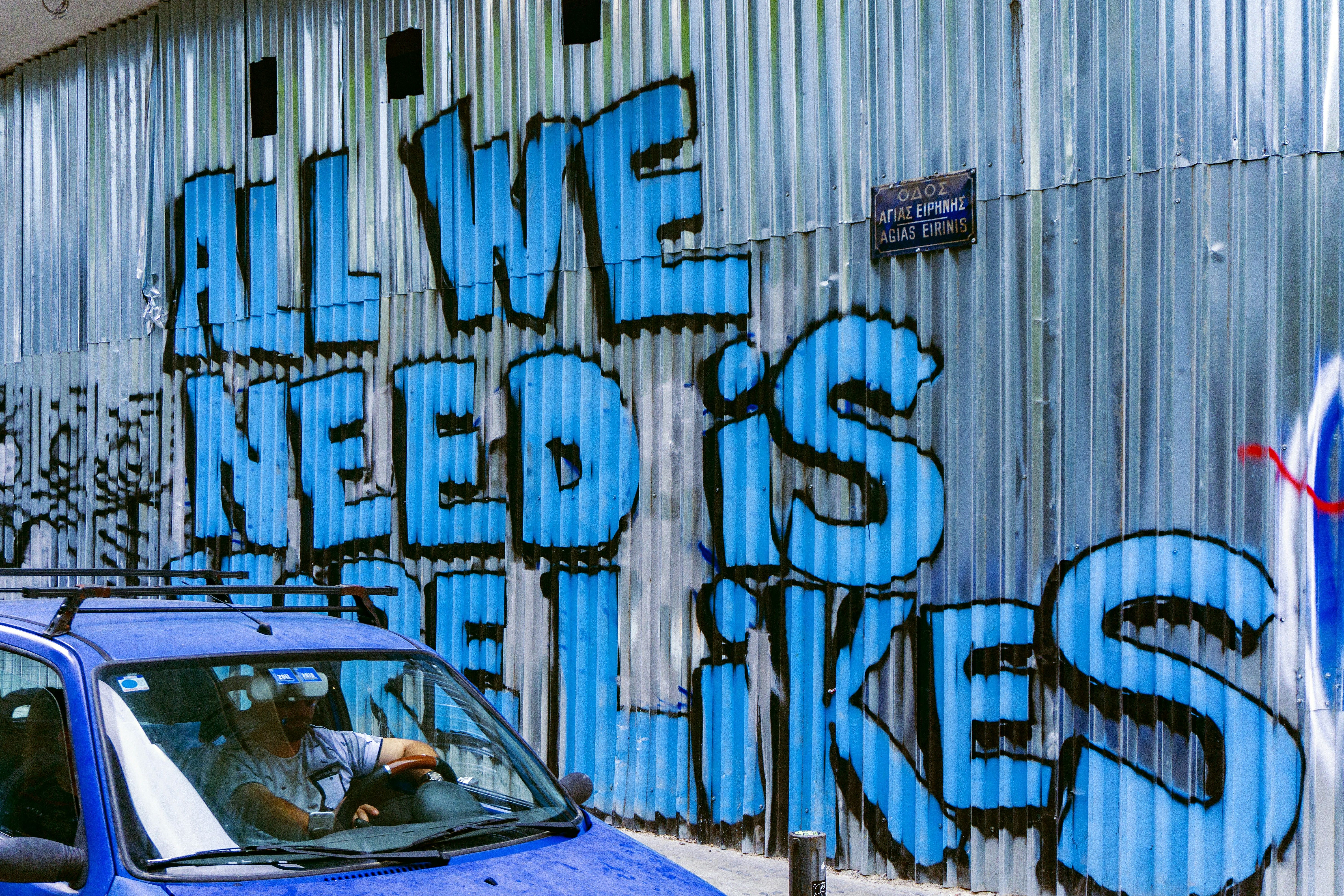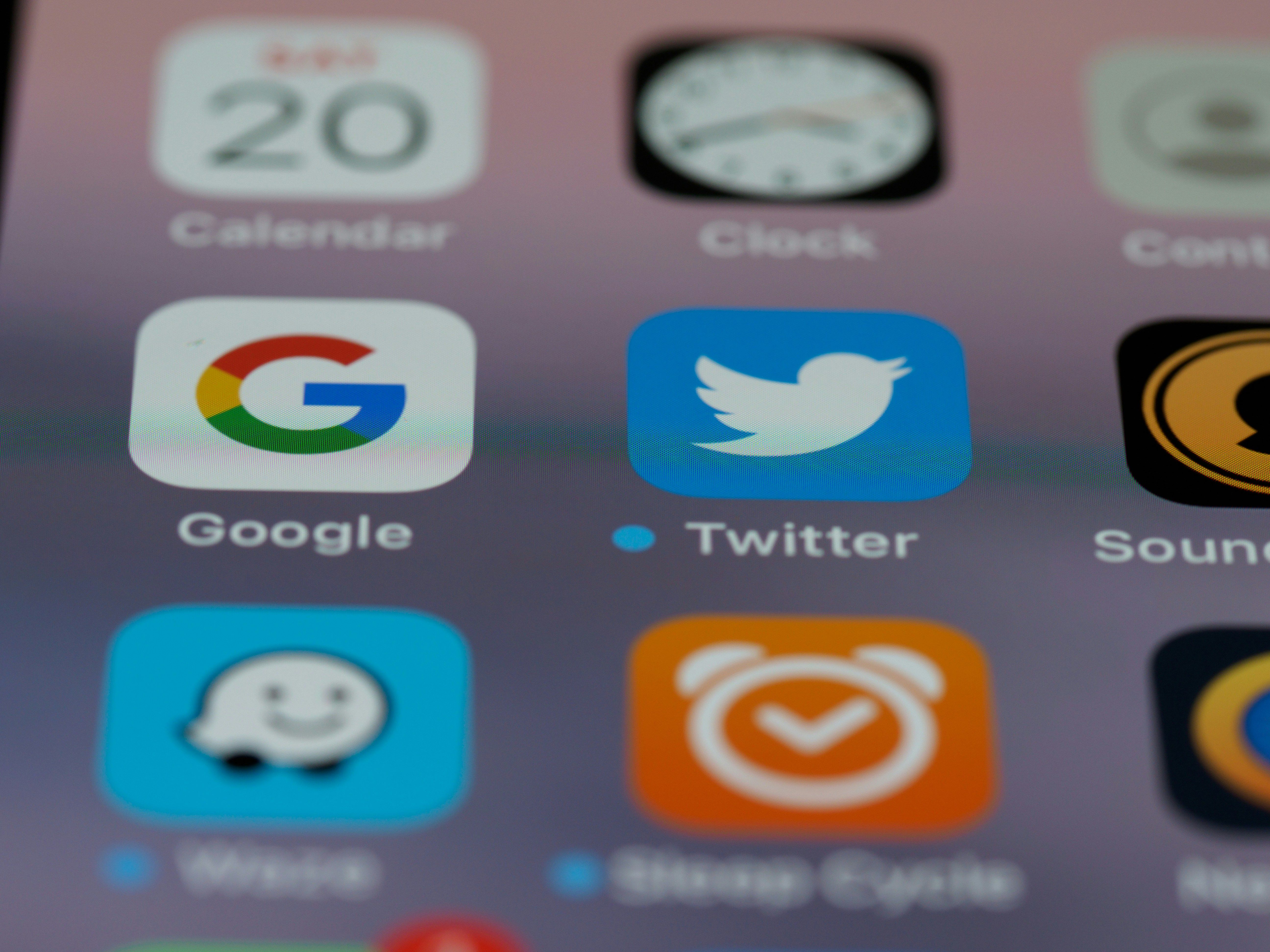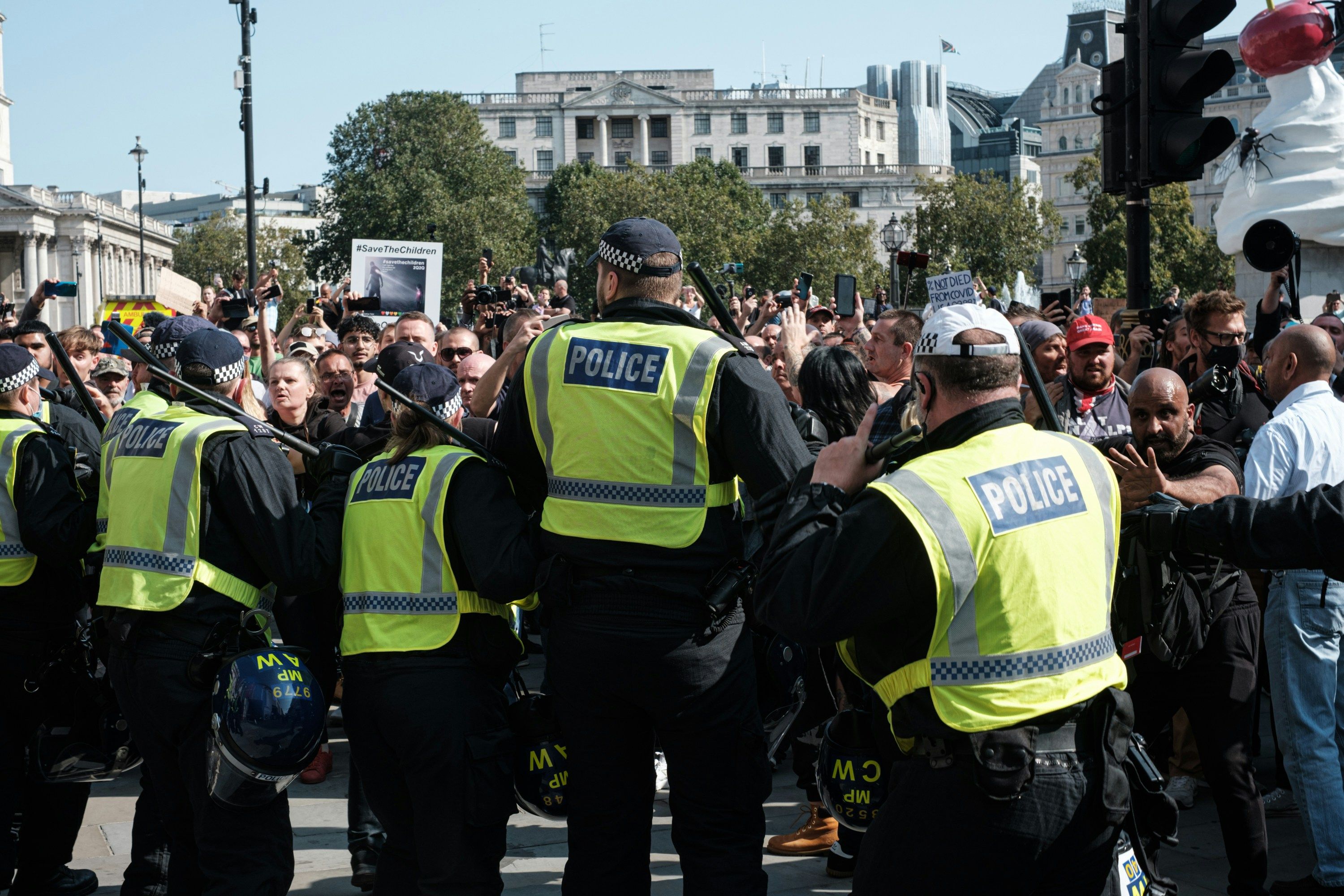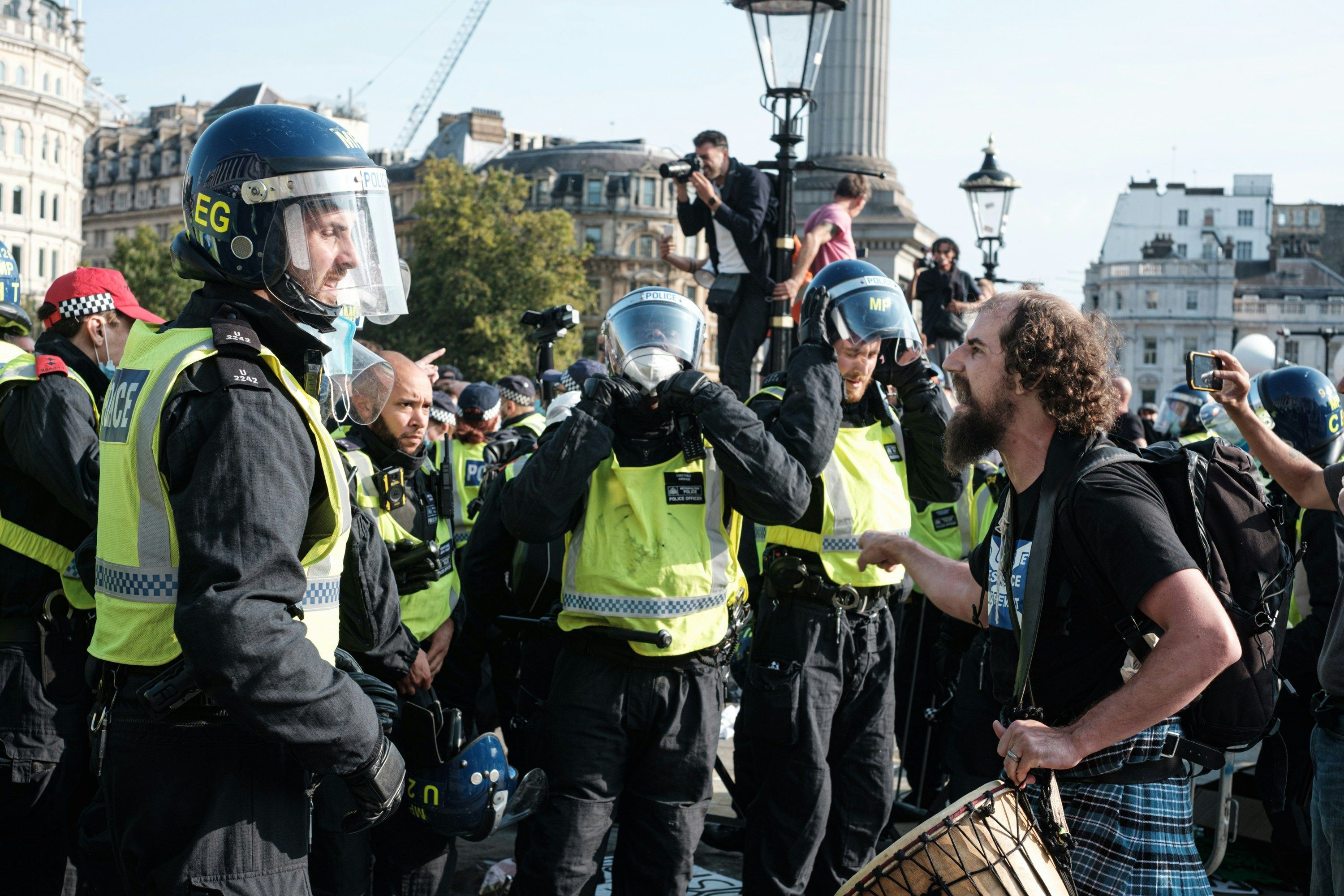Recently the United Kingdom has witnessed an unprecedented wave of civil unrest, manifesting in riots across various cities. This surge in social disturbances has drawn attention due to the violence displayed and the role social media has played in amplifying these events. From instant information sharing to the viral spread of polarizing content, platforms such as X (formerly Twitter) and other alternative media channels have become focal points in the discussion about the intersection of technology and public safety.
The Role of Social Media in Amplifying UK Riots

Photo by Daria Nepriakhina 🇺🇦 on Unsplash
Algorithmic Amplification and Radicalization
Social media platforms, designed to capture and maintain user attention, often prioritize sensational content that elicits strong emotional responses. In the context of the UK riots, these algorithms can inadvertently favor extremist rhetoric or violent content by making it more visible and viral. This happens through a complex system where content that garners significant engagement (likes, shares, comments) is further promoted to other users. This algorithmic amplification can lead to an increased radicalization of users. Individuals who may have only harbored minor grievances can become deeply radicalized as they are repeatedly exposed to extreme viewpoints, which the platforms' algorithms suggest based on their engagement history.
Social Media as a Polarization Engine
As noted by experts and researchers, social media has transformed into a "polarization engine" that significantly drives societal divisions deeper. Due to its algorithmic structure, social media tends to create echo chambers where users are fed content that aligns with their existing beliefs, isolating them from opposing views and reinforcing their perceptions. This has turned platforms into fertile grounds for spreading far-right ideologies and mobilizing like-minded individuals. Polarization is further intensified by the ability of users to communicate and organize swiftly and at scale, making it much easier to hold mass mobilizations that could escalate into riots.
The Spread of Misinformation and Disinformation

Photo by Brett Jordan on Unsplash
Misinformation vs. Disinformation: Definitions and Differences
Understanding the distinction between misinformation and disinformation is critical in analyzing social media's role during civil unrest. Misinformation refers to false information shared without harmful intent — essentially, the people sharing it believe it to be true. In contrast, disinformation is deliberately created and distributed with the intent to deceive and manipulate public perception. Both are prevalent on social media and can severely impact public understanding and response in times of crisis, such as during the riots.
Examples from Recent UK Riots
During the recent UK riots, various instances of misinformation and disinformation were reported. For example, social media posts falsely blaming certain ethnic groups for inciting violence or alleging police brutality where none occurred were widespread. These posts fueled anger and mistrust among the public, escalating the riots. Social media platforms became battlegrounds where different versions of the truth clashed, complicating efforts to restore peace and order.
Response Strategies from Social Media Companies
In response to the chaos amplified by their platforms, social media companies have started to implement more rigorous monitoring and fact-checking mechanisms. They have also increased their collaboration with law enforcement to track and mitigate illegal activities. However, the effectiveness of these measures often comes into question. Critics argue that these actions are too little and react too late to prevent the damage initially caused by the rapid spread of harmful content. Moreover, the balance between regulating content and protecting free speech remains a contentious issue, complicating the responsibilities and actions of these companies in times of crisis.
It's imperative that all stakeholders, including governments, social media companies, and users, engage in a concerted effort to understand and mitigate the negative impacts of these platforms during times of civil unrest.
Legal and Political Responses

Photo by Ehimetalor Akhere Unuabona on Unsplash
Current Laws and Their Enforcement
In the UK, the legal framework dealing with incitement and public order had been significantly tested by the recent riots. Existing laws under the Public Order Act 1986 cover provocations to violence and harassment, which remain applicable both online and offline. However, the rapid spread and scale of disinformation and organized violence via social media platforms have pushed these laws to their limits.
The introduction of the Online Safety Act in 2023, although not fully operational, marks a pivotal shift. This legislation mandates social media companies to take decisive actions against illegal contents, like racially or religiously aggravated offenses and incitements to violence. Yet, its full implementation remains staggered, leading to criticisms about the speed of enforcement when urgent response is required.
Statements and Actions by UK Politicians
UK politicians, including Prime Minister Keir Starmer and Home Secretary Yvette Cooper, have unequivocally condemned the misuse of social media for inciting violence. In the thick of the riots, Prime Minister Starmer affirmed that laws apply equally online, promising prosecutions for those inciting violence digitally. Home Secretary Cooper highlighted the dual responsibility of social media firms in curbing online agitations and the spread of misinformation.
Despite these strong stances, some critics argue that political responses have lagged, allowing social media-driven misinformation to escalate into real-world violence more rapidly than governmental counteractions could handle.
Future Legislation and Policy Changes
Moving forward, the UK government faces the challenge of tightening regulatory frameworks while balancing civil liberties. Proposed measures include enhanced surveillance and broader enforcement powers, which have stirred debates around privacy and state overreach. What remains clear is the necessity for a "grown-up conversation" about digital technologies, as noted by legal experts, to reconcile rapid technological advances with traditional frameworks of law and order.
The Global Context of Social Media and Unrest

Photo by Aman Pal on Unsplash
Comparative Analysis: UK Riots and International Incidents
Internationally, the UK riots mirror other global instances where social media played a central role in political unrest. Similar patterns were observed during the 2018 Chemnitz riots in Germany and the Capitol attack in the U.S., where social media acted as a catalyst that brought together violent actors fueled by extremist ideologies. There clearly exists a broader, global pattern of social media platforms serving as passive carriers of information and active amplifiers of divisive and often dangerous rhetoric.
The Role of Foreign State Actors
Foreign state actors have also been implicated in these disturbances, with reports suggesting that countries like Russia and Iran may have engaged in online disinformation campaigns to exacerbate the unrest. These activities aim to destabilize societal trust and cohesion by amplifying polarizing messages. The involvement of such state actors complicates the response needed, extending beyond domestic policy to international cybersecurity and diplomatic strategies.
What Lessons Are We Learning From The UK Riots?
The recent crises underscore the urgent need for international cooperation in addressing the misuse of digital platforms. Moving forward we should aim to be:
- Strengthening international alliances to tackle cyber threats collaboratively.
- Implementing stricter regulations and quicker enforcement against harmful online contents by tech companies.
- Enhancing public awareness and media literacy to critically assess online information.
Overall, tackling the dual threats of social media-driven disinformation and state-sponsored cyber activities will require a multifaceted strategy involving technological, legal, and diplomatic resources. As digital platforms continue to evolve, so too must our approaches to safeguarding democracy and public safety against the potent mix of technology and extremism.






